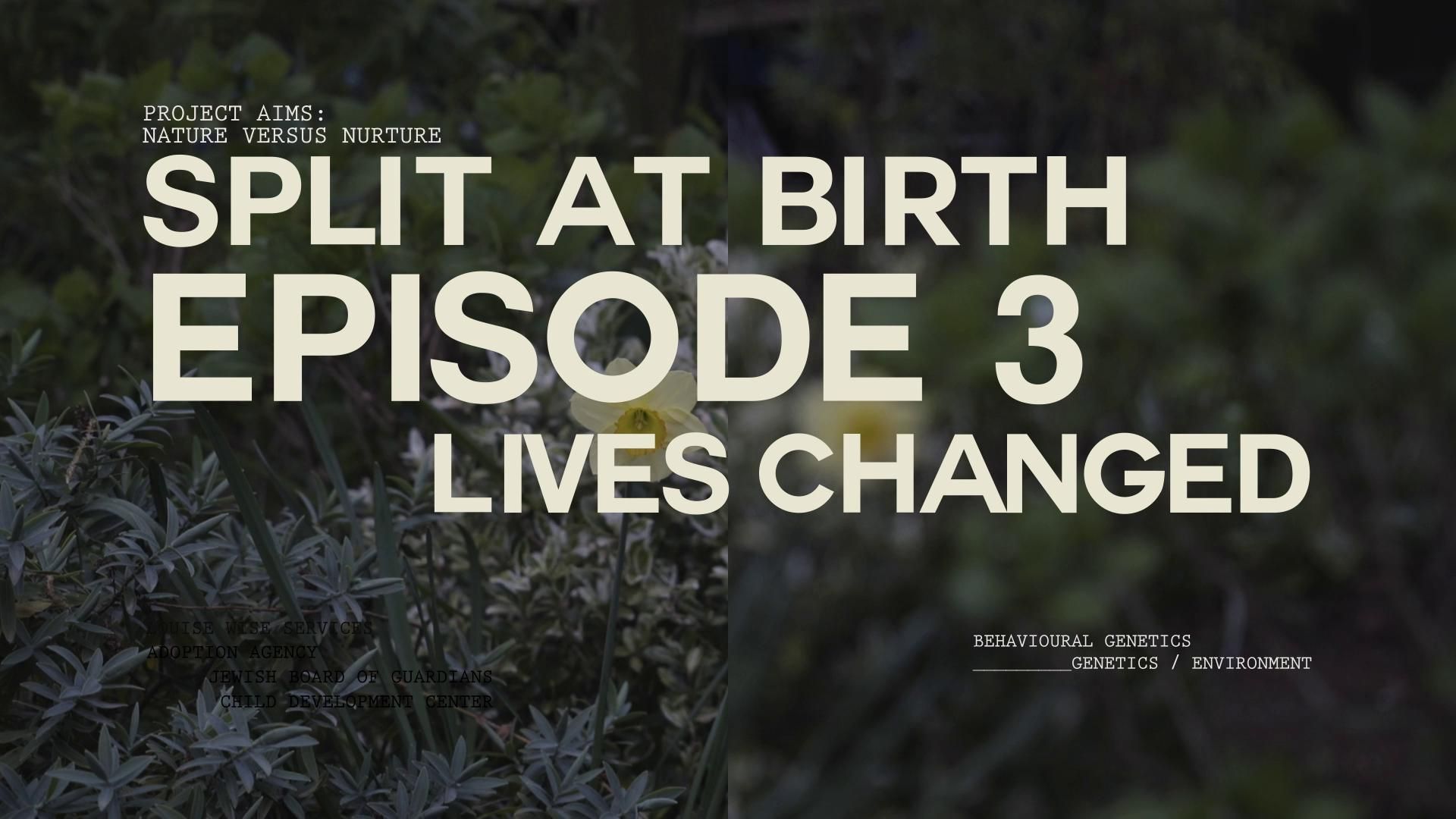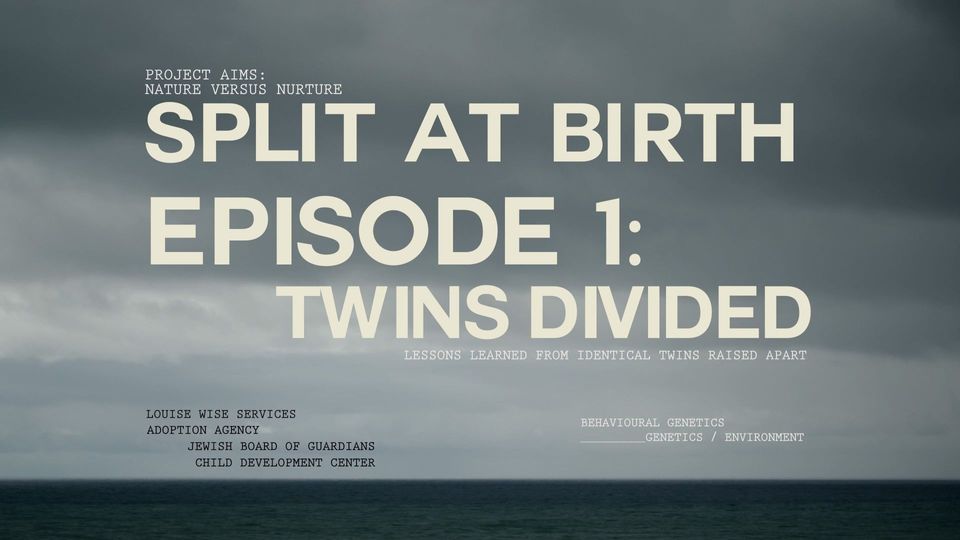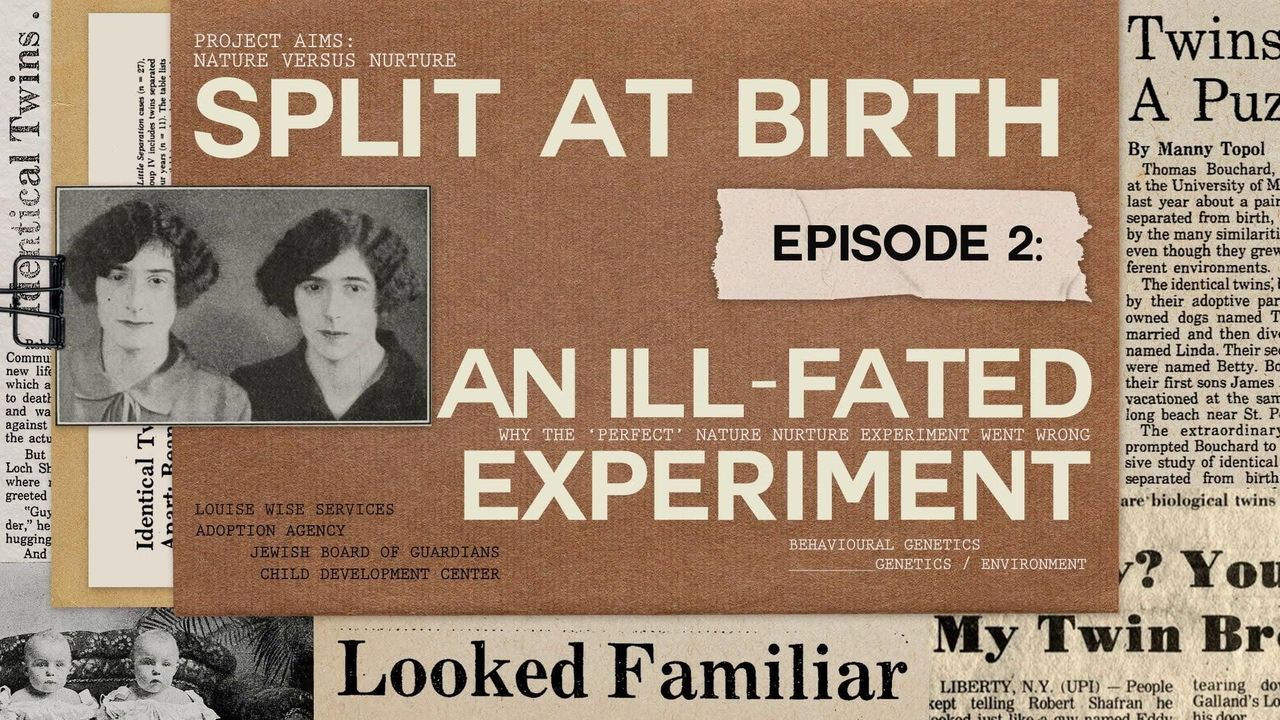Imagine two souls born from the same womb, sharing DNA, yet growing up in entirely different worlds. This is the story of twins split at birth—a phenomenon that sparks curiosity, emotion, and endless questions about identity, nature versus nurture, and the unbreakable bonds of twinship. It's not just a scientific marvel; it's a human drama that unfolds across continents, cultures, and lifetimes. Today, we dive deep into this extraordinary topic, exploring its mysteries and shedding light on the lives of those who have walked this unique path.
From adoption stories to groundbreaking research, the world of twins split at birth is filled with twists and turns. These siblings, separated early in life, often reconnect years later, revealing fascinating similarities and differences shaped by their environments. We’ll explore why this happens, how it impacts their lives, and what it means for our understanding of genetics and upbringing. So buckle up, because we’re about to embark on an unforgettable journey!
As we delve deeper into this topic, remember that every story here is rooted in real-life experiences, scientific studies, and expert insights. Whether you're a twin, a parent, or simply someone fascinated by the intricacies of human connection, this article promises to deliver value, knowledge, and maybe even a few goosebumps along the way.
Read also:Jessica Dupart The Rising Star In The World Of Entertainment
Table of Contents
- What Are Twins Split at Birth?
- Why Do Twins Get Separated at Birth?
- The Biological Bonds of Twins
- Nature vs. Nurture: The Big Debate
- Reunion Stories: When Twins Meet Again
- The Psychological Impact of Being Split at Birth
- Famous Twins Split at Birth: Real-Life Examples
- Scientific Research on Twins Split at Birth
- Ethical Considerations and Adoption Practices
- Conclusion: Celebrating the Twin Connection
What Are Twins Split at Birth?
Let's start with the basics. Twins split at birth refer to identical or fraternal twins who are separated right after they're born. This separation usually occurs due to circumstances surrounding adoption, family dynamics, or social services decisions. While it may sound like something out of a movie, it happens more often than you might think. In fact, historical records show countless instances where twins were placed in different homes, sometimes without either party knowing.
So why does this happen? Well, there are several reasons. Back in the day, some people believed raising twins together could overwhelm families financially or emotionally. Others thought splitting them up would give each child a better chance at individual growth. Of course, times have changed, but the legacy of these practices lingers in the stories of countless twins worldwide.
Nowadays, researchers study these cases to understand how genetics and environment shape human development. Twins split at birth offer a rare opportunity to examine the interplay between nature and nurture, making them a valuable subject in scientific circles.
Why Do Twins Get Separated at Birth?
There’s no one-size-fits-all answer to this question, but let’s break it down. Historically, twins were sometimes separated due to economic constraints. For instance, if a family couldn’t afford to raise two children, they might place one child up for adoption. Other times, social workers made the decision based on what they thought was best for the children.
Cultural Beliefs
In some cultures, twins carry special significance—and not always positive. In certain African communities, twins were once seen as omens or signs of misfortune. As a result, they were occasionally separated to protect the family or community. Thankfully, such beliefs have largely faded, but their echoes remain in older adoption records.
Adoption Practices
Another common reason involves adoption agencies. Some agencies believed separating twins would increase their chances of finding adoptive families. After all, not everyone is prepared to take on two newborns at once. However, modern adoption practices prioritize keeping twins together whenever possible, recognizing the importance of their bond.
Read also:Planet Of The Apes Film Series A Cinematic Journey Through Time
The Biological Bonds of Twins
Twins share an incredible biological connection, especially identical twins who share the exact same DNA. But here’s the kicker—this bond doesn’t disappear just because they’re separated. Studies show that twins can experience similar thoughts, feelings, and even physical symptoms, regardless of distance. How crazy is that?
Take, for example, the famous case of Jim Springer and Jim Lewis, identical twins who were separated at birth and reunited decades later. Despite growing up in completely different environments, they shared astonishing similarities—down to their hobbies, careers, and even their choice of pets. This kind of synchronicity isn’t uncommon among twins split at birth.
How Genetics Play a Role
Genetics play a huge role in determining personality traits, physical characteristics, and even preferences. Identical twins, who share 100% of their DNA, often exhibit striking resemblances in appearance and behavior. Fraternal twins, on the other hand, share about 50% of their DNA, similar to regular siblings. Still, the twin connection remains strong, even when they’re apart.
Nature vs. Nurture: The Big Debate
One of the most fascinating aspects of twins split at birth is the debate over nature versus nurture. Are we born with certain traits, or do our environments shape who we become? Twins offer a unique lens through which to examine this question.
For instance, consider the Minnesota Twin Family Study, one of the largest and most comprehensive studies on twins. Researchers found that while genetics heavily influence traits like intelligence and temperament, environment also plays a significant role. In other words, both nature and nurture work together to create the complex individuals we all are.
Key Findings from Research
- Identical twins show higher concordance rates for traits like height and IQ compared to fraternal twins.
- Environmental factors like upbringing, education, and social interactions contribute significantly to personality development.
- Despite being raised apart, twins often develop similar interests and habits, suggesting a strong genetic influence.
Reunion Stories: When Twins Meet Again
Reunion stories are the heart and soul of the twins split at birth narrative. Imagine walking into a room and seeing someone who looks exactly like you, talks like you, and even laughs like you. That’s the magic of twin reunions.
One such story involves the "Jim Twins" mentioned earlier. When they finally met, they discovered they both had married women named Linda, divorced, and then remarried women named Betty. They also shared a love for carpentry, woodworking, and even named their dogs Toy. Mind = blown.
Emotional Impact of Reunions
Reunions can be overwhelming, joyful, and sometimes bittersweet. Many twins describe feeling an instant connection, as though they’ve found a missing piece of themselves. Others may struggle to adjust to having a "twin" in their lives after so many years apart. Regardless, these moments are powerful reminders of the resilience and strength of the human spirit.
The Psychological Impact of Being Split at Birth
While reunions are exciting, the psychological impact of being split at birth shouldn’t be overlooked. Growing up without your twin can create feelings of loneliness, confusion, or even identity crisis. Some twins report feeling incomplete or searching for something they couldn’t quite define until they met their sibling.
On the flip side, others thrive in their individual environments, developing unique personalities and skills. Yet, the knowledge that they have a twin somewhere in the world can linger in the back of their minds, influencing their choices and relationships.
Therapeutic Support
For twins navigating the complexities of separation and reunion, therapy can be incredibly beneficial. Counselors specializing in twin dynamics can help process emotions, build relationships, and foster understanding between siblings. It’s all about creating a safe space to explore these deeply personal experiences.
Famous Twins Split at Birth: Real-Life Examples
Let’s talk about some famous cases of twins split at birth. These stories have captured the public imagination and inspired countless articles, documentaries, and even books.
The Jim Twins
We already touched on Jim Springer and Jim Lewis, but their story deserves another shoutout. Their uncanny similarities made headlines worldwide and became a cornerstone of twin research.
The Boxer Twins
Then there’s the story of Daphne Jefferies and Barbara Hermann, identical twins separated at birth and reunited in their 40s. Both women became boxers, competed in tournaments, and even won championships. Talk about destiny!
Oscar and Jack
Oscar and Jack are another fascinating pair. Born in Trinidad, they were separated and raised in different countries—one in Venezuela, the other in Trinidad. When they reunited as adults, they discovered they both enjoyed photography, music, and sports.
Scientific Research on Twins Split at Birth
Scientists love studying twins split at birth because they provide a natural experiment for examining genetic and environmental influences. From personality traits to mental health, researchers have uncovered valuable insights through these studies.
One notable study conducted by the University of Minnesota followed hundreds of twins over several decades. The results highlighted the importance of both genetics and environment in shaping human behavior. Another study focused on the epigenetic changes that occur when twins grow up in different environments, shedding light on how lifestyle and surroundings can alter gene expression.
Future Directions
As technology advances, researchers hope to unlock even more secrets about twins and their connections. Genetic testing, brain imaging, and artificial intelligence are just a few tools being used to deepen our understanding of this phenomenon.
Ethical Considerations and Adoption Practices
Finally, let’s address the ethical concerns surrounding twins split at birth. Is it right to separate siblings who share such a profound bond? Should adoption agencies prioritize keeping twins together? These are tough questions with no easy answers.
Advocates for keeping twins together argue that their bond is essential to their development and well-being. On the other hand, some believe separation gives each child the opportunity to form their own identity. Ultimately, it comes down to what’s best for the individual twins and their specific circumstances.
Conclusion: Celebrating the Twin Connection
Twins split at birth represent one of the most intriguing phenomena in human biology and psychology. From their biological connections to their emotional journeys, their stories remind us of the complexity and beauty of human relationships. Whether reunited or apart, twins carry a special bond that transcends time and distance.
So, if you’ve ever wondered about twins split at birth, we hope this article has given you a deeper appreciation for their experiences. And hey, if you’re a twin yourself, maybe it’s time to reach out and reconnect. Who knows—you might discover a whole new side of yourself in the process!
Feel free to leave a comment below or share this article with someone who might enjoy it. Together, let’s celebrate the incredible world of twins and the unbreakable bonds they share.


